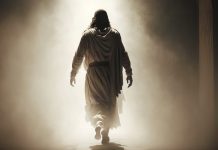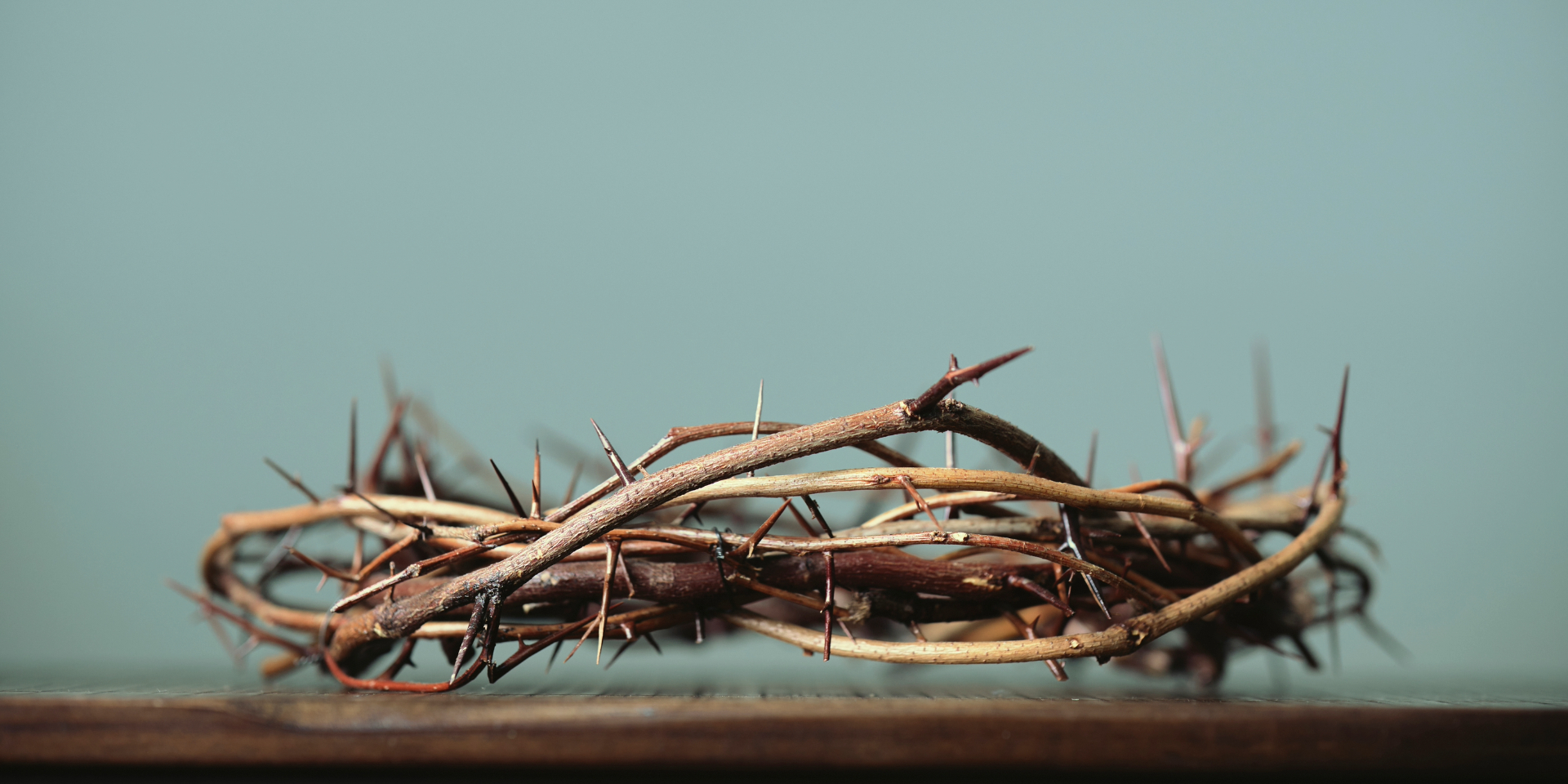In the frenzy that grips most Christians at this time of year, the coverage of Easter celebrations in the press is a good indication of how people prepare for Easter.
Romanians have a tradition of house cleaning in the days leading up to the feast of the Resurrection. Yards are swept, curtains washed, furniture dusted, windows cleaned, sheets and carpets aired. While most of the preparations remain in the realm of the ridiculous, more like spring cleaning, the imaginary pilgrimage with Jesus in His last days can be a genuine source of spiritual cleansing. The dramatic significance of the events of Jesus’s last days can produce an intense spiritual experience, with a visible effect on the outlook on life of those who accept this pilgrimage.
Sunday
The central element of Palm Sunday is the episode of Christ’s triumphal entry into Jerusalem. Stirred by the news of the recent resurrection of Lazarus, the people are eager to see the Giver of Life. Jesus comes from Bethany, about three kilometres from Jerusalem. The group of disciples is joined by pilgrims on their way to the Temple for the Passover. The excitement is building and the witnesses are watching closely. The procession stops at the top of the Mount of Olives,[1] east of Jerusalem.
Jerusalem stretches out before them all, its splendor enhanced by the setting sun. One unique element stands out from the landscape—the Temple. During the reign of Herod the Great, 10,000 workers helped to rebuild the Temple. The Temple Hill is surrounded by white marble porticoes. The inner courtyard stands before the Temple, with twelve steps leading up to the porch. Including its side chambers, the structure is about 50 meters wide—approximately equal to its height. The whole Temple complex, with all its outbuildings and courtyards, makes an overwhelming impression on visitors.
Instead of admiration at what He saw, however, a cloud of sorrow appears on the Saviour’s face. In front of Him is the Garden of Gethsemane, where He will suffer the agony of surrender before His crucifixion, and next to it is Golgotha[2], soon to be the place of His death. But it is not His own fate that grieves Jesus on this occasion, but the rejection by His people.
Jerusalem is preparing for the Passover. On the 10th of Nissan the lamb is chosen (Exodus 12:3-6) to be sacrificed a few days later, on the 16th of Nissan. As with the choice of the Passover lamb five days before the day of slaughter, on that evening (the 10th of Nissan) the Jews, by denying the Son of God, had just chosen the Lamb they would later sacrifice on the 16th of the month.
Monday
After His triumphal entry into Jerusalem, “since it was already late, [Jesus] went out to Bethany with the Twelve” (Mark 11:11; John 11:18—about 3 kilometers). It seems that the Saviour did not spend the night in the city, but “when evening came, Jesus and His disciples went out of the city” (Mark 11:19). On Monday morning, on the way out of Bethany, Jesus was hungry. He passed by a fig tree that appeared to be full of fruit, but in reality was a deceptive crown of leaves. And Jesus cursed the tree. The parable of the fig tree (Luke 13:6-9), which Christ had told some time before, is related to this Monday morning episode. The cursing of the fig tree becomes an illustrative prophetic act or parable for the Jewish people who had not developed the true fruits—mercy, humility and love—but only spiritual arrogance and pretensions of righteousness: “At that time, declares the Lord… when they are punished… there will be no grapes on the vine, there will be no figs on the tree, and their leaves will wither” (Jeremiah 8:1-13).
The second cleansing of the Temple also took place on Monday. The large courtyard, which included the altar of sacrifice and the women’s court, had become the place for trading in the goods and animals needed for the service. The Temple officials, seeking profit, traded forgiveness for animals. Determined not to be intimidated as they had been on the previous occasion, the rulers proved to be even more disturbed by the authoritative voice of Jesus. Interestingly, on this occasion some flee from Him, and some flee to Him. The latter are the helpless and the harmless (“the blind and the lame… children”—Matthew 21:14, 15).
Tuesday
Jesus spends most of the day teaching the people in the Temple and responding to the accusations of the religious leaders. Asked to show a sign of His authority, Jesus responds according to the practice of rabbinic debate—with another question—and asks the Pharisees to decide on the authority of John the Baptist and, by implication, His Messiahship. He receives a political answer—”We don’t know”. When the Jews try to get Him to comment on the payment of tribute to Rome, so that He can be accused of treasonous intentions towards the Roman authorities, they receive the famous answer, “Render unto Caesar the things that are Caesar’s, and unto God the things that are God’s”.
The dialogues and discourses continue throughout the day. A brief conversation with the Sadducees about the resurrection is followed by the logical conclusion: “God is not a God of the dead, but of the living”. In addressing the Pharisees about the origin of the Messiah (Matthew 22:41-45), Jesus determines them to take into account the legitimacy of the Messiah’s pre-existence (John 8:58). Then comes the proclamation of “woes” (Matthew 23:13-36), through which Christ demolishes the so-called noble character of the Jewish leaders.
Towards the end of the day, witnessing the offering of gifts in the Temple, Jesus is moved by the gesture of a widow who offers the Lord her last penny (Mark 12:43). The encounter with the Greeks, brought by Philip and Andrew (John 12:20-22), seems to follow immediately after this episode, a revitalising episode for Jesus after the exhausting debates with those who were sceptical and disinterested in His message. In the context of Tuesday’s events, His declaration, “Look, your house is left to you desolate” (Matthew 23:38), frightens the hearers. When the disciples ask for further clarification in a private meeting, Jesus responds by linking His description of the destruction of Jerusalem and the Temple to the day of His return in glory (Matthew 24).
Wednesday
The events traditionally associated with this day are the anointing of Jesus’s body at the feast of Simon and His betrayal by Judas for 30 pieces of silver.
Although the day before Palm Sunday is also known as “Lazarus Saturday”, traditionally attributed to the resurrection of Lazarus, the textual evidence suggests that the resurrection had taken place sufficiently in advance to precede the meeting of the Jews’ highest religious council, the Sanhedrin, and the retreat of Jesus and the disciples to the city of Ephraim (John 11:54). Lazarus had already been resurrected and had participated in the anointing of the body of the Saviour at the feast of Simon the Leper (John 12:1-11; Mark 14:3; Matthew 26:6). According to John’s account (12:1-19), the feast at Simon’s house took place “six days before the Passover” (John 12:1).
For these reasons, the anointing of the body of the Saviour (Matthew 26:12) at the feast of Simon the Leper cannot be placed on Wednesday, but before the Passion Week. However, regardless of its place in time, the event makes an important contribution to the sequence of events in the last days of the week, since the presence of Lazarus at the feast drew the attention of the crowds to the miracle of the resurrection and confirmed the special nature of Christ’s mission (John 12:9, 17).
Thursday
The term “Passover” was originally applied only to the 14th of Nisan, but in Christ’s day it was sometimes used to refer to the Feast of Unleavened Bread that followed Passover (seven days of eating only unleavened bread—Luke 22:7). Although there is no unanimously accepted explanation for the dating of the Passover in the year of Jesus’s death, on the basis of the available evidence, the following sequence of events relating to the Last Supper, the Crucifixion and the Passover can be suggested:
- In the year of the Crucifixion, either as a result of the controversy between the liberal and conservative elements of Judaism, or due to unknown circumstances, there may have been a double celebration of Passover.
- Christ and the disciples, together with other conservative Jews, had the Last Supper on Thursday evening, specifically in the early hours of the official day of Nisan 14, making it a true Passover celebration.
- In the year of the crucifixion, the official Passover celebration was on the Friday night after the crucifixion. Jesus died on the cross at the time of the evening sacrifice and slaughter of the Passover lambs on Friday, Nisan 14.
- Jesus rested in the tomb on the weekly Sabbath, which that year coincided with the ceremonial Sabbath of Nisan 15, the first day of the Feast of Unleavened Bread.
- Jesus was resurrected on Sunday morning, Nisan 16, the day on which the wave sheaf symbolising the resurrection was offered in the Temple.
The Jewish tradition of celebrating Passover included the blessing of wine by the head of the household and the serving of the Passover meal, which consisted of Passover lamb, unleavened bread, bitter herbs, lettuce, greens and a spiced sauce called charoset, made from almonds, dates, olives, raisins, spices, and vinegar. A second glass of wine was passed from person to person, and then the first part of the Passover hymn, Psalms 113 and 114, was sung. The head of the family thanked God for the unleavened bread, broke it and gave a portion to each person, along with pieces of the Passover lamb. After the third and fourth cups of wine, they all joined in singing Psalms 115 and 118.
In the upper room of a house in Jerusalem, before the meal was served, Christ “began to wash His disciples’ feet” (John 13:5), thus initiating a service of preparation for the Lord’s Supper (John 13:15; 1 Corinthians 11:23-26). It was in this context that the betrayer, Judas, was unmasked. When his plans were revealed, Judas got up and hurriedly left the room.
Friday
After the Last Supper and the closing hymn—probably Psalms 115 and 118—were sung, Jesus and the disciples left the house and retired to the Mount of Olives. Alone before the difficult moments of trial and crucifixion, Jesus cries out in extreme anguish: “Father, …may your will be done!” (Matthew 26:42).
The religious leaders had decided to condemn Him to death. To preserve the appearance of legality, two conditions were necessary for Jesus’s condemnation: a religious trial—on a charge of blasphemy—before the Sanhedrin, for apparent justification under Jewish law, and a civil trial—on a charge of inciting disobedience to Roman authority—before Pilate, to obtain the Romans’ approval to carry out the death sentence.
After a preliminary hearing before Annas, which took place sometime between one and two o’clock on Thursday night, the trial before the Sanhedrin took place. According to Jewish law, capital offences were to be tried during the day and the trial was to be completed during the day. However, out of fear of the people, the leaders organised the trial in secret, with a unanimous verdict of guilty and a death sentence. At sunrise, in order to maintain the appearance of legality, the Sanhedrin reconvened, reiterated the verdict and handed Jesus over to the Roman authorities for execution.
During the first hearing before him, Pilate, the Roman governor of Judea and Samaria, awakened at about 6 a.m., took note of the Jewish accusations against Jesus and became convinced of His innocence. Had it not been for the insistence of the Jews, he would have released Jesus. But when he learned that Jesus was from Galilee, he sent Him to Herod Antipas, who was then in Jerusalem. Under these circumstances, Judas, seeing that time was running out and the trial was drawing to a close, could no longer bear the torture of his guilty conscience and hanged himself (Matthew 27:3-5).
Jesus was a Galilean, so Herod Antipas, King of Galilee and Perea, could investigate the case and pass sentence. Convinced of Jesus’s innocence, he refused to pass sentence and sent Jesus back to Pilate. This hearing took place at 7 o’clock on Friday morning. Although he later tries to free Jesus, Pilate finally capitulates to the Jews’ demand that Jesus be crucified. This trial probably began around 8 o’clock and ended before 9 o’clock in the morning.
After arriving with the crowd at Calvary (Golgotha), as the soldiers crucified Him, Jesus prayed for His enemies and answered the repentant thief’s prayer. Then, at the ninth hour, with nature unleashed, Jesus cried out: “It is finished!” Then He died.
Before sundown, Joseph of Arimathea and Nicodemus, ignoring the prospect of ritual defilement by touching a dead human body, anointed Jesus’s body with a precious mixture of myrrh and aloe, then laid it in Joseph’s tomb. The women, the last to arrive at Jesus’s tomb, were witnesses to what was happening. “It was Preparation Day, and the Sabbath was about to begin” (Luke 23:54).
Saturday
The women who had come with Jesus from Galilee returned to their homes after seeing where Jesus was buried, and then “they rested on the Sabbath in obedience to the commandment” (Luke 23:56). “The next day, the one after Preparation Day, the chief priests and the Pharisees went to Pilate” and asked him to appoint a guard to watch over the tomb. They based their request on what Jesus had said about rising on the third day (Matthew 27:62,63). The religious leaders feared that Jesus’s disciples might steal His body and then claim that He had risen. Although Pilate did not believe in the possibility of resurrection, he agreed to this measure to prevent further unrest and conflict. Jesus’s tomb was sealed and Roman soldiers kept watch.
Resurrection Sunday
“On the first day of the week, very early in the morning, the women took the spices they had prepared and went to the tomb. They found the stone rolled away from the tomb, but when they entered, they did not find the body of the Lord Jesus” (Luke 24:1-3). Horrified by the absence of the body, but also by the apparition of two men dressed in white, the women, including Mary Magdalene, are given the news of Jesus’s resurrection (Luke 24:5-7). They inform the eleven disciples and the others who were with them of the news. Peter and John went to the tomb to see if the news was true. That same day, Jesus came up to two disciples on the road to Emmaus, and in the evening He appeared to the apostles and then to the disciple Thomas, who had doubted the reality of His resurrection.
An open epilogue
The biannual pilgrim concludes the Gospels. Probably in revolt against the unfounded anger of the Jews against the One who had done them nothing but good, he silences the voice of his own conscience that cries out against injustice. A memory from catechism class echoes vaguely in his mind, something that sounds like a Messianic prophecy: “…despised and rejected by mankind [not only Jews]…”, “…we held Him in low esteem…”, “He was pierced for our transgressions…” (Isaiah 53). The accusing finger softens in the face of a clearly inclusive expression. After smiling at the child in the manger, after nodding in agreement with the Sermon on the Mount, the pilgrim realises that if he does not grasp the meaning of Christ’s death and the empty tomb, he may miss the heart of the story.
The reason is simple and profound. If it is true that Jesus came, it is equally true that He will come again. One day everyone will have to meet the protagonist of the Cross. What happens after that depends on understanding the nature of Bethlehem and Calvary. Fortunately, the story of the pilgrim has an open epilogue.



















